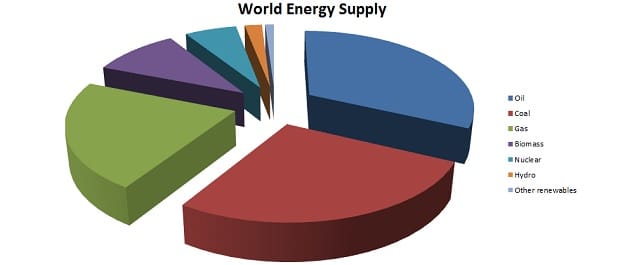Peak water worries energy experts

What are the key takeaways from the World Economic Forum’s latest report on energy?
One, global energy demand is showing no signs of slowing down, despite “peak driving” having arrived already in the US and Europe. Two, if we’re going to ease energy poverty for the large chunk of the world population that still goes without modern supplies, demand is likely to keep going much higher.
And, three, buried deep toward the end of the report — “Energy Vision 2013 – Energy Transitions: Past and Future” — with little further elaboration is that, well before we begin running out of fuel, water might become a serious problem. And less water could mean less energy, because so many types of energy production are highly dependent on water. In fact, water plays a critical role in energy production from coal, nuclear, oil and natural gas … which together supply 92 percent of the world’s energy.
So what else does the World Economic Forum report tell us about the state of global energy, both now and in years ahead? Among the more daunting facts:
- 1.3 billion of the world’s 7 billion people — nearly one out of five — have little or no access to modern energy.
- Despite our best efforts to make energy greener, use of coal has far outstripped renewables. Compared to clean energy, the demand for coal has grown 10 times more since the year 2000.
- One-fourth of the world’s human-caused carbon emissions come from burning coal.
- Not including hydropower, just 1.6 percent of the world’s energy today comes from clean sources.
- Since 2000, worldwide demand for energy has increased by 27 percent.
- Over the course of just two years — from the beginning of 2010 and the end of 2012 — the average cost for solar panels dropped from about $2.25 per watt to around $0.75 per watt — a decline of 65 percent.
- Between now and 2035, the number of cars in the world is expected to double to 1.9 billion. In other words, in a little over 20 years, we’ll have more cars than the number of people today without access to energy.
- Many of the additional cars coming onto roads over the next two decades will likely still depend upon oil for fuel, despite efforts to fast-track the adoption of electric and alternative-fuel vehicles. For example, while China has projected that five million electric cars will be sold domestically by 2020, just 12,000 were sold in 2012. Adoption of EVs (electric vehicles) in the US has also proceeded more slowly than officials had hoped.
- It took 60 years (1840 to 1900) for coal to go from 5 percent of the world’s primary energy market to 50 percent. It took the same number of years (1915 to 1975) for oil to increase from 5 percent to 40 percent of primary energy supply.
- While parts of Europe and Japan are pulling the plug on nuclear power, other regions will more than make up for that reduction. From now until 2035, nuclear power capacity in China alone is expected to grow by 109 gigawatts. India (41 gigawatts of new capacity) and Russia (28 gigawatts) will also contribute to that growth.




